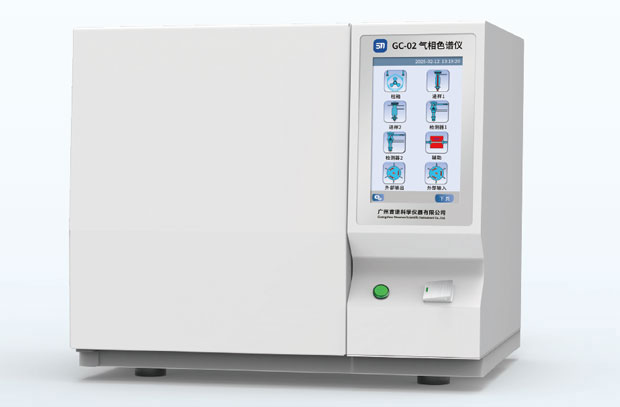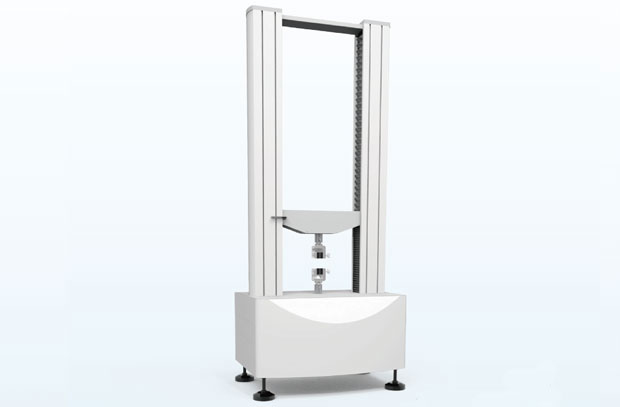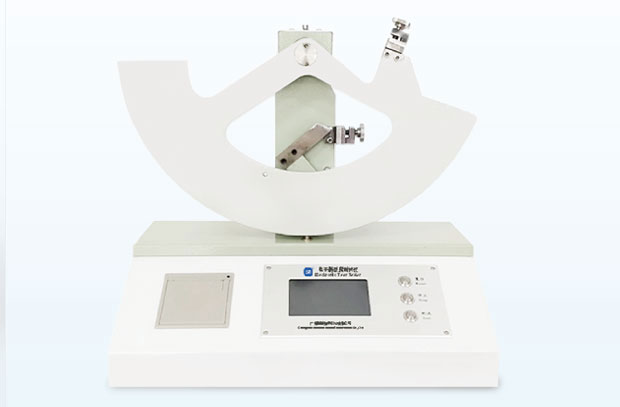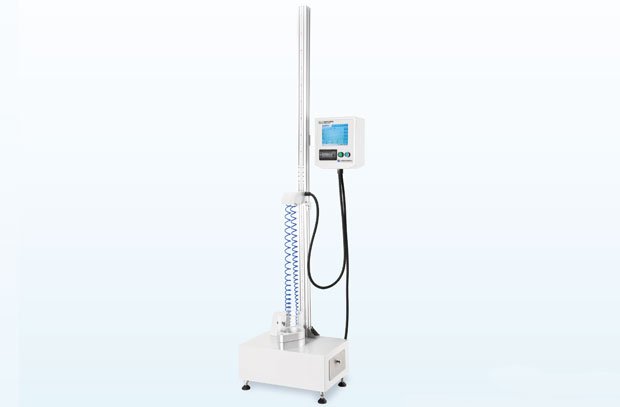Source: Zhiyan Consulting-Industry Research
Abstract: Plastic packaging has become the largest sub-industry in the pharmaceutical packaging market due to its advantages such as light weight, non-fragile, good barrier properties, and mature molding technology. In 2022, the market size of China's pharmaceutical plastic packaging materials industry reached 55.677 billion yuan, a year-on-year increase of 4.78%, accounting for 39.0% of the overall size of the pharmaceutical packaging industry, and will continue to maintain a growth trend in the future. Pharmaceutical plastic packaging.jpg
1. Definition and classification
Pharmaceutical packaging mainly refers to the packaging of pharmaceutical preparations, that is, packaging and containers that directly contact drugs. Pharmaceutical packaging is an indispensable part of medicines, which runs through the entire process of drug production, circulation and use. At present, the main packaging materials in the pharmaceutical industry include glass, plastic, rubber, metal and other types. Among them, medical plastic packaging is a material that uses synthetic or natural polymer compounds as the basic components, is molded during the processing process, and the product can finally maintain the same shape. From the perspective of application areas, pharmaceutical plastic packaging products can be divided into five categories: composite films (bags), injection containers and components, plastic bottles, tubes, boxes and components (excluding ophthalmic preparation packaging) and other plastic packaging; from the perspective of raw material types, pharmaceutical plastic packaging products can be divided into PE, PP, PET and other raw material types. Classification of pharmaceutical plastic packaging.jpg
II. Industry policies
1. Industry competent authorities and self-regulatory organizations
The competent authority of the pharmaceutical metal packaging industry is the State Food and Drug Administration. The main responsibilities of the State Drug Administration are: formulating policies and plans for the supervision and management of drugs and drug packaging materials and supervising their implementation, participating in the drafting of relevant laws, regulations and departmental regulations; responsible for administrative and technical supervision of drugs and drug packaging materials, formulating national standards for drugs and drug packaging materials; responsible for formulating quality management specifications for the development, production, circulation, and use of drugs and drug packaging materials and supervising their implementation.
The Drug Registration Department under the State Drug Administration is specifically responsible for organizing the formulation of drug packaging materials and container product catalogs, pharmaceutical requirements, standards and research guidelines; responsible for the registration of drugs, packaging materials and containers that directly contact drugs, and pharmaceutical excipients.
The Ministry of Industry and Information Technology is responsible for formulating and organizing the implementation of industry plans, plans and industrial policies for the pharmaceutical industry, proposing policy recommendations for optimizing industrial layout and structure, drafting relevant laws and regulations, formulating regulations, formulating industry technical specifications and standards and organizing their implementation, guiding industry quality management work; and responsible for the industry management of drugs and drug packaging materials.
The China Pharmaceutical Packaging Association is a self-regulatory organization in the pharmaceutical packaging industry. The main responsibilities include organizing investigations and research on the market dynamics of pharmaceutical packaging materials, containers, machinery and related pharmaceutical excipients, and timely delivering market information; organizing cooperation and research on pharmaceutical packaging technology, promoting new technologies, new materials, new processes, new equipment and consulting services related to pharmaceutical packaging; organizing and holding national product introduction, trading and ordering exhibitions entrusted by the government or according to the needs of market and industry development, and activating the market of pharmaceutical packaging materials, containers and packaging machinery; publicizing and implementing national standards, participating in the formulation and revision of industry standards, and organizing the formulation and release of association standards voluntarily implemented by the industry.
2. Industry supervision system
China implements a product registration and approval management system for pharmaceutical packaging materials. The packaging materials and containers used by pharmaceutical manufacturers that are in direct contact with drugs must meet the requirements for pharmaceutical use and the standards for protecting human health and safety, and must be approved for registration by the State Council's drug supervision and administration department. The State Food and Drug Administration has formulated a catalog of registered pharmaceutical packaging materials, and together with the drug supervision and administration departments of provinces, autonomous regions, and municipalities directly under the Central Government, has implemented the approval management of registration applications for pharmaceutical packaging materials in accordance with the principle of unified management and hierarchical responsibility. At the same time, a management model combining government administrative supervision and industry association self-discipline management is implemented for approved pharmaceutical packaging material enterprises.
3. Industry-related policies
With the continuous improvement of Chinese laws and regulations, and the stricter approval of the National Drug Administration for pharmaceutical packaging material registration certificates, the survival of the fittest in the pharmaceutical packaging material industry has been accelerated, and the market has been driven to concentrate on high-quality enterprises with large-scale production capacity, core technology, and strong quality management capabilities in the industry, and the pharmaceutical plastic packaging industry has been continuously promoted to develop in a standardized and high-quality direction. For example, in February 2024, the National Pharmacopoeia Commission issued two draft pharmaceutical packaging material standards, namely, the Guiding Principles for Biological Evaluation and Test Selection of Pharmaceutical Packaging Materials and the Guidance on Sealing of Sterile Pharmaceutical Packaging Systems. The publicized draft standards include the main text, drafting instructions, biological evaluation endpoints, analysis of the causes of abnormal termination of biological tests, selection of extraction conditions for biological tests of pharmaceutical packaging materials, and 12 supporting test methods and drafting instructions. Pharmaceutical plastic packaging industry chain.jpg
III. Development history
China's pharmaceutical plastic packaging industry has experienced a development process from the initial stage to the rapid development stage, and then to the stage of quality improvement and efficiency enhancement. It has made great progress and development in many aspects such as policies, technologies, and market demand. In recent years, China's pharmaceutical plastic packaging industry has paid more attention to quality improvement and efficiency enhancement, and has increasingly stringent environmental protection requirements. The industrial structure has been gradually optimized, and enterprises have begun to introduce advanced production technologies and equipment to improve production efficiency and product quality. At the same time, the government has continuously increased its supervision of the pharmaceutical packaging industry, strengthened the quality supervision and management of packaging materials, and promoted the healthy development of the industry.
IV. Industry barriers
1. Access barriers
Packaging materials and containers that directly contact drugs directly affect the effectiveness and safety of drugs. China has implemented registration and approval management by the State Food and Drug Administration since 2004. Drug packaging material manufacturers must first transform their purification workshops, pass the purification level test of professional institutions, and then conduct on-site reviews by the Drug Administration, and select three batches of products for full inspection. After all tests are qualified, experts from the China Food and Drug Inspection Institute will conduct technical reviews, and finally the State Food and Drug Administration will approve and issue the "Drug Packaging Materials and Containers Registration Certificate".
Each variety and material structure of drug packaging materials produced by drug packaging material manufacturers must obtain the "Drug Packaging Materials and Containers Registration Certificate" issued by the State Food and Drug Administration. Especially since the implementation of the new version of GMP on March 1, 2011, the approval of drug packaging material registration certificates has become more stringent. It takes a long time and is difficult for newly established drug packaging material manufacturers to obtain the "Drug Packaging Materials and Containers Registration Certificate" qualification, and the acquisition of qualifications forms an entry barrier for new entrants in the industry.
2. Technical barriers
The pharmaceutical packaging industry is a multidisciplinary, knowledge-intensive, and capital-intensive high-tech industry. The research and development, design, and production of pharmaceutical packaging products usually involve multiple disciplines and technologies such as pharmacy, materials science, fine chemistry, packaging engineering, and mechanical manufacturing. Entering the pharmaceutical packaging industry requires strong cross-industry technology integration capabilities and long-term technical experience accumulation. The accumulation of proprietary technology and the cultivation of scientific research and development capabilities are a long-term process, which cannot be quickly formed by general companies in a short period of time. Industry-leading companies have a large number of pharmaceutical packaging product registration certificates and pharmaceutical packaging material product technology patents, and are leading in product design, production technology, and production processes. Therefore, the products they produce have significant advantages in variety, performance, and customer satisfaction, which helps to maintain their core competitiveness and form barriers to companies that enter the pharmaceutical plastic packaging industry later.
3. Capital barriers
Pharmaceutical packaging is an industry with high capital investment. Especially under the trend of stricter quality requirements for pharmaceutical packaging materials, new entrants in the industry need to have strong financial strength as a guarantee: First, the investment in fixed assets such as machinery and equipment is large, and the purchase cost of key machinery and equipment is high. If high-performance products are produced, they may need to be imported from abroad; Second, in order to meet the needs of different drugs, pharmaceutical packaging materials are always in continuous development and innovation, and product research and development innovation and quality inspection require more expenses.
4. Talent barriers
The pharmaceutical packaging industry involves a variety of disciplines and technologies. Therefore, having a group of high-level, multidisciplinary, compound professionals is a key factor in determining whether an enterprise has core competitiveness. Generally speaking, the growth cycle of core technical talents in the pharmaceutical packaging industry is relatively long, and the cost of internal training is relatively high. At the same time, companies have a strong protection for these talents and often take various incentives to retain them. It is difficult for new entrants to attract the required technical personnel through public recruitment. The pharmaceutical packaging industry itself started late in China's market development, and there is a lack of advanced equipment in training institutions such as universities, and scientific research conditions are limited. Therefore, it is difficult to cultivate qualified high-end talents on a large scale in a short period of time. In addition to core technical personnel, the pharmaceutical packaging industry has a large demand for skilled technical workers. At present, there is a large gap between the supply and demand of such talents in my country, and it is difficult for new entrants to the industry to recruit a sufficient number of skilled technical workers.
5. Channel barriers
The main customers of pharmaceutical packaging companies are usually pharmaceutical companies. After they form a cooperative relationship with pharmaceutical packaging companies, they generally have a strong stickiness. The main reason is: in order to meet the safety requirements of drugs, when pharmaceutical companies choose pharmaceutical packaging companies, they usually need to conduct regular on-site quality audits and retrospective analyses of pharmaceutical packaging material manufacturers to examine the compatibility of pharmaceutical packaging materials and drugs, which generally takes no less than half a year; if the raw materials, prescriptions, production processes, etc. of pharmaceutical packaging materials change, pharmaceutical companies should re-verify compatibility. Pharmaceutical companies generally do not easily replace existing qualified suppliers due to factors such as drug safety and time cost of compatibility verification, thus forming channel barriers in the industry.
5. Industrial Chain
The upstream industry of pharmaceutical plastic packaging involves plastic raw materials and related processing equipment. Among them, plastic raw materials mainly include polyethylene, polypropylene, polyester, polyvinyl fluoride, polyvinylidene chloride, etc. Other raw materials mainly include adhesives, inks, protective coatings, additives, etc. Polyethylene is a very important raw material in pharmaceutical plastic packaging plastic raw materials. In recent years, China's polyethylene production has continued to increase, providing abundant raw materials for the development of the pharmaceutical plastic packaging industry. The downstream of the pharmaceutical plastic packaging industry is the application market, which mainly includes major domestic chemical drugs, traditional Chinese medicines, and biological drugs. Relevant policies of the pharmaceutical plastic packaging industry.jpg
6. Development status
Plastic packaging has developed into the largest sub-industry in the pharmaceutical packaging market due to its advantages such as light weight, non-fragile, good barrier properties, and mature molding technology. In 2022, the market size of China's pharmaceutical plastic packaging materials industry reached 55.677 billion yuan, a year-on-year increase of 4.78%, accounting for 39.0% of the overall size of the pharmaceutical packaging industry, and will continue to maintain a growth trend in the future. Major enterprises in the pharmaceutical plastic packaging industry.jpg
VII. Development factors
1. Favorable factors
(1) Support from national industrial policies
Industry development is closely related to the support from national industrial policies. A series of industry policies and development plans issued by the state provide a good policy environment for the pharmaceutical packaging industry, which helps to promote the healthy and orderly development of the pharmaceutical plastic packaging industry. For example, in December 2021, the National Healthcare Security Administration, the National Drug Administration, the State Administration of Traditional Chinese Medicine and other nine departments issued the "14th Five-Year Plan for the Development of the Pharmaceutical Industry", which pointed out: Improve the standard system and quality specifications of pharmaceutical excipients and packaging materials, and promote products to effectively meet the requirements of generic drug consistency evaluation and internationalization of preparations. In December 2023, the National Development and Reform Commission issued the "Guidelines for Industrial Structure Adjustment (2024 Edition)", encouraging the development of biopharmaceutical supporting industries including new pharmaceutical packaging materials and technologies such as special functional materials.
(2) The trend of population aging is intensifying
According to data from the National Bureau of Statistics, in 2023, China's population aged 65 and above will be 216.76 million, accounting for 15.4% of the total population. At present, China's society has entered a stage of rapid aging, and the problem of population aging is becoming increasingly serious. Since the elderly are one of the main consumer groups of pharmaceutical products, population aging will promote the annual increase in drug consumption, thereby driving the rapid growth of the market demand for pharmaceutical plastic packaging.
(3) Residents' consumption level continues to improve
In recent years, China's residents' consumption level has continued to improve. According to data from the National Bureau of Statistics, in 2023, China's per capita disposable income reached 39,218 yuan, a year-on-year increase of 6.33%; per capita consumer expenditure reached 26,796 yuan, a year-on-year increase of 9.20%. With the continuous improvement of national purchasing power, people's attention to physical health has continued to increase. At the same time, the country's reform of social security systems such as pension and medical care has continued to deepen. The scale of China's pharmaceutical consumption market will continue to expand, and the demand for pharmaceutical plastic packaging by pharmaceutical companies will further increase.
(4) Strong demand in the downstream market
Medical plastic packaging is used to encapsulate a wide range of downstream drugs, including various injections, vaccines, biological preparations, antibiotics, infusions, blood collection, anti-tumor drugs, etc. The overall situation of the pharmaceutical industry and the development of the pharmaceutical packaging materials industry are highly correlated with the pharmaceutical plastic packaging industry. With the continuous development of my country's pharmaceutical industry, the pharmaceutical plastic packaging industry will also continue to develop.
2. Unfavorable factors
(1) Low industry concentration and fierce market competition
The scale of Chinese pharmaceutical packaging companies is generally small. Although China began to implement the registration and approval system for pharmaceutical packaging materials in 2004, the standardized development of the pharmaceutical packaging industry has entered a new track, but due to the low requirements for pharmaceutical packaging materials for early pharmaceutical products, the industry generally has low quality standards, which makes the industry entry threshold relatively low, resulting in low concentration in the pharmaceutical plastic packaging industry and fierce market competition.
(2) Relative shortage of professional and technical personnel
Since the pharmaceutical packaging industry involves multiple disciplines and professional and technical fields, and as an independent sub-industry, its own scale is small and it is difficult to generate large economic benefits. Therefore, it is not attractive enough to some large scientific research institutions and professional talents, resulting in a lack of high-end talents in the industry. As the industry's demand for compound talents and professional and technical personnel continues to expand, the contradiction of relatively insufficient reserves of talents and technical workers with compound backgrounds has become increasingly prominent, which will restrict the rapid development of the pharmaceutical plastic packaging industry.
(3) There is still a certain gap compared with the international advanced level
With the emergence of new drugs and new dosage forms and the improvement of the country's requirements for drug packaging safety, pharmaceutical plastic packaging companies objectively need to improve their technical level to adapt to market demand. However, the technology of most pharmaceutical plastic packaging companies in my country is still at a relatively early stage, and the product innovation is insufficient. The overall technology of the pharmaceutical plastic packaging industry is still a certain distance away from the international advanced level. The above gap is mainly manifested in two aspects: first, the quality of some pharmaceutical plastic packaging materials is low, high-end products still rely on imports, and product quality is still difficult to reach the international advanced level; second, there is still a gap between domestic pharmaceutical plastic packaging production equipment and similar foreign equipment in terms of quality and performance, which also limits the improvement of product research and development and manufacturing technology in the pharmaceutical plastic packaging industry.
VIII. Competition pattern
Due to the high requirements of the pharmaceutical packaging industry for technology and capital, the industry concentration in the international market is very high. Companies such as Amcor Group have large business scale, high technology content, and rich product structure, occupying the main market share; while the domestic market is relatively fragmented at present, but with the increasing requirements of downstream pharmaceutical companies for the research and development and testing level and independent innovation capabilities of pharmaceutical packaging material manufacturers, the competition among manufacturers in China's pharmaceutical plastic packaging industry will gradually shift from price competition to all-round competition in technology, brand, service, etc. Some small and medium-sized enterprises that cannot adapt to the development trend of the industry will be eliminated, merged or acquired, and the industry concentration will gradually increase. The brand advantages of leading companies in the industry will gradually become apparent. Medical plastic packaging industry market share.jpg
Note: This article is transferred from Zhiyan Industry Encyclopedia Platform. If you need more industry information and customized services, you can enter Zhiyan Consulting to search and view.









 Tel:13556033107
Tel:13556033107 E-mail:gzsnyq@vip.163.com
E-mail:gzsnyq@vip.163.com 




